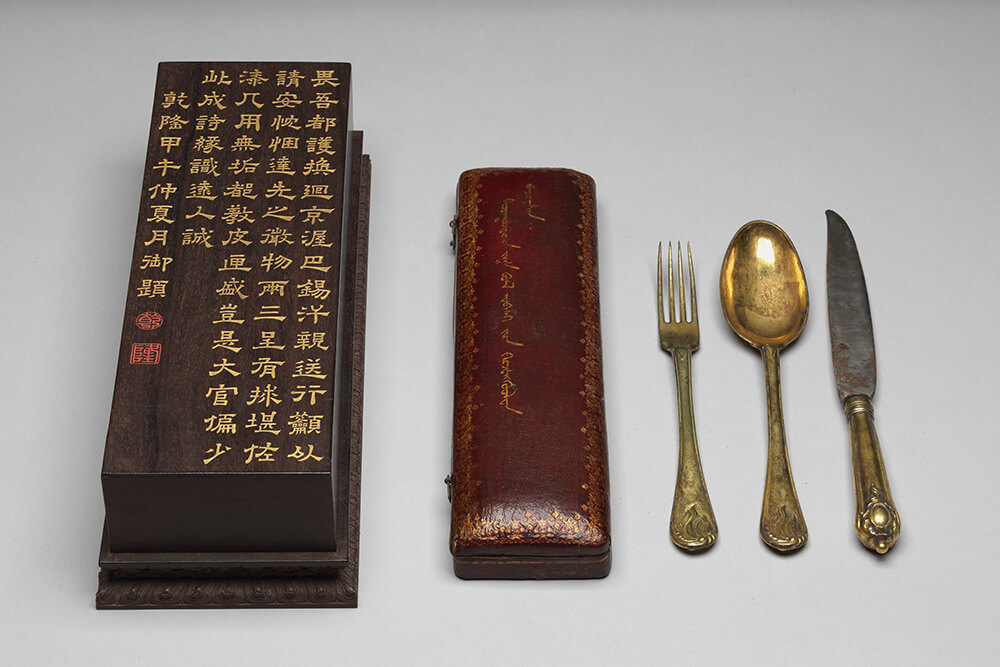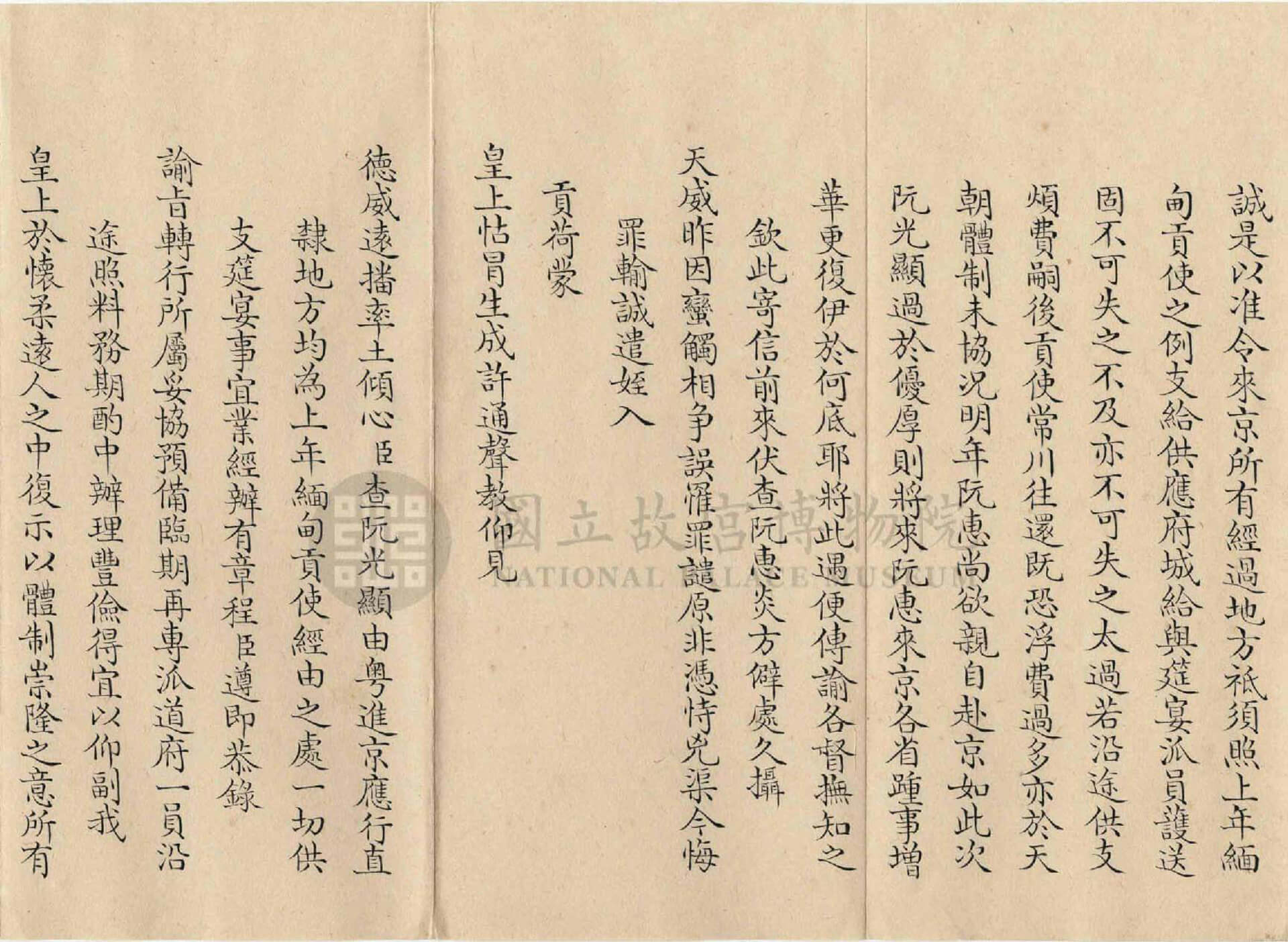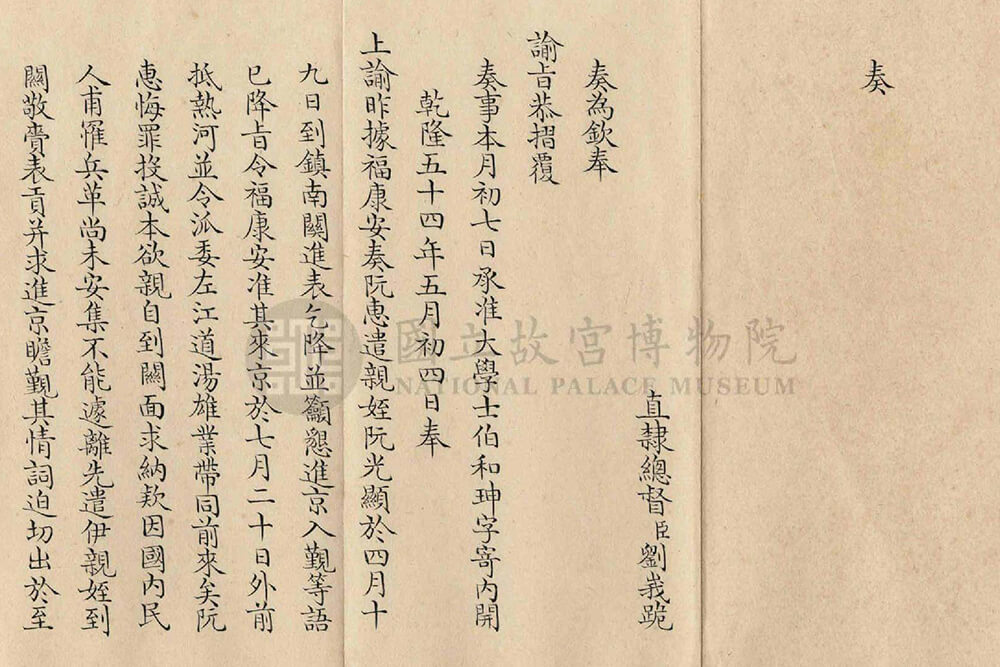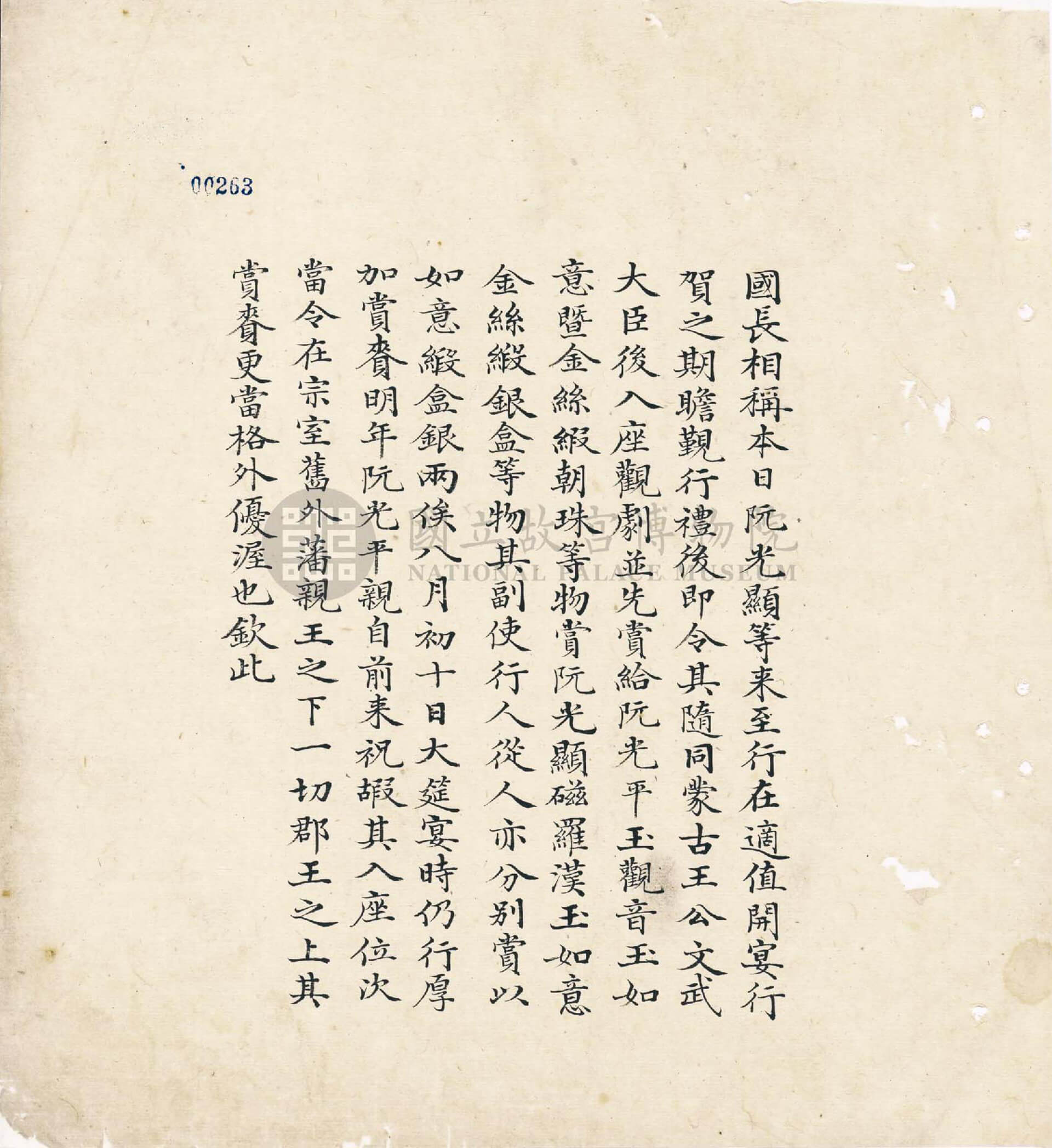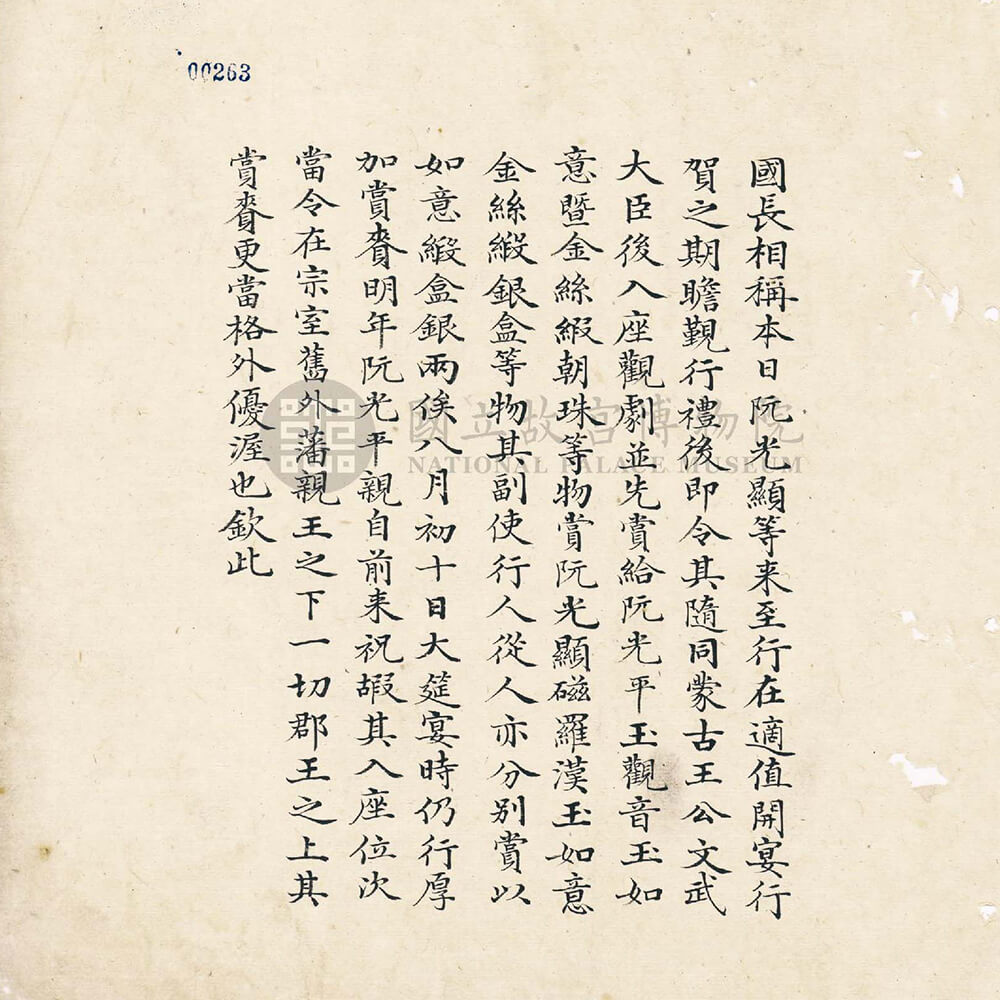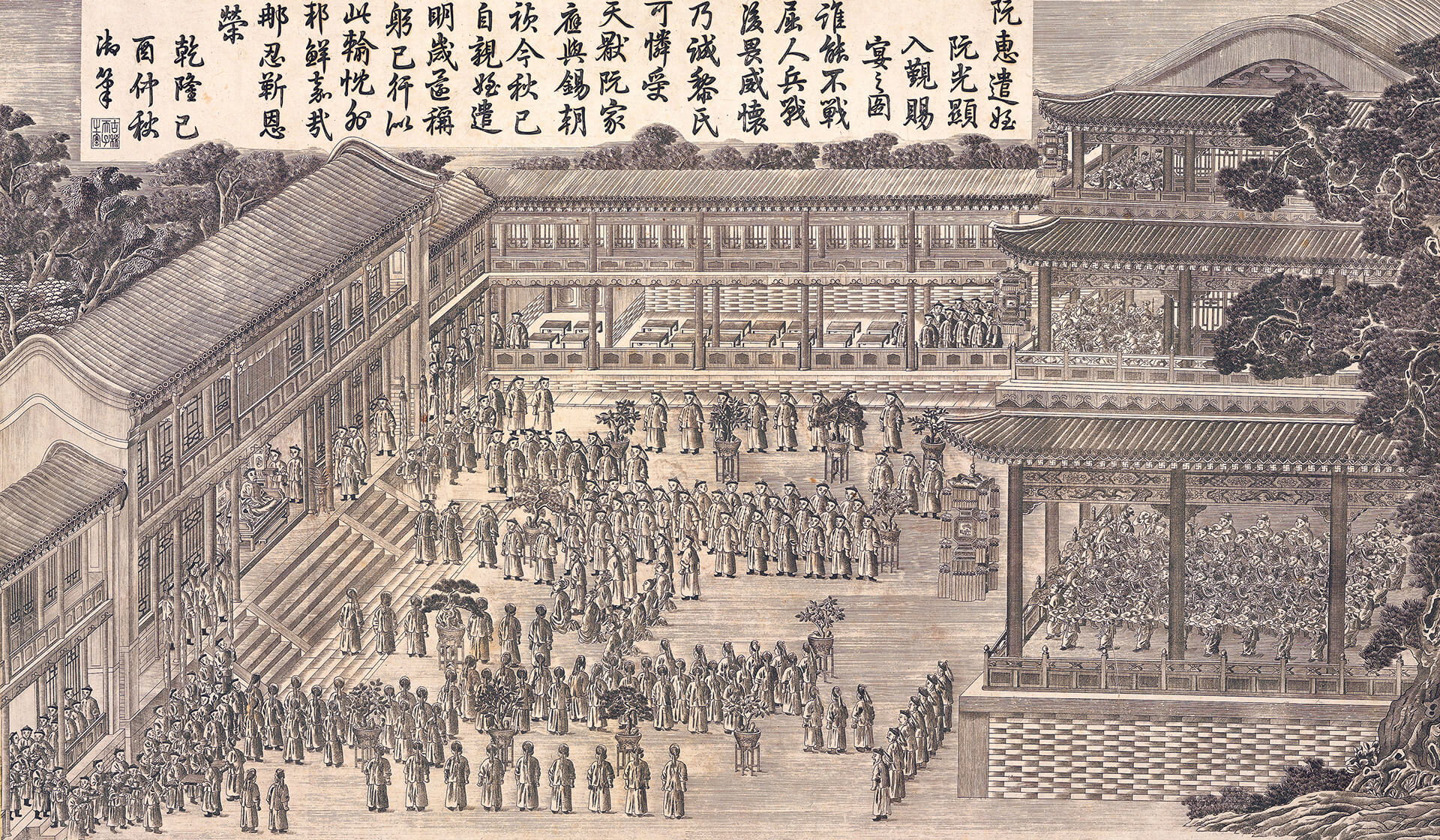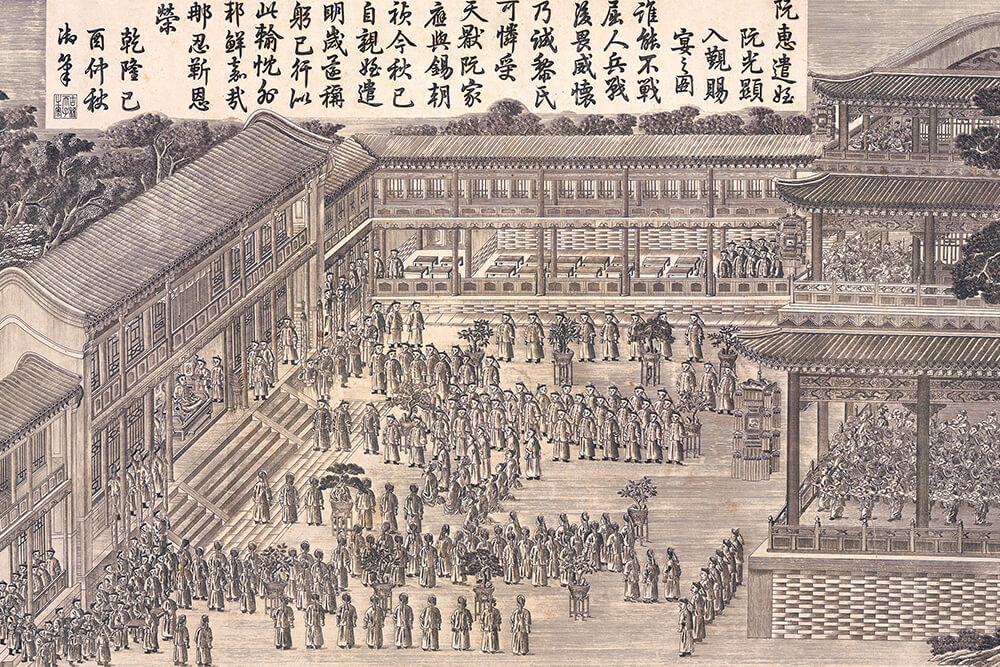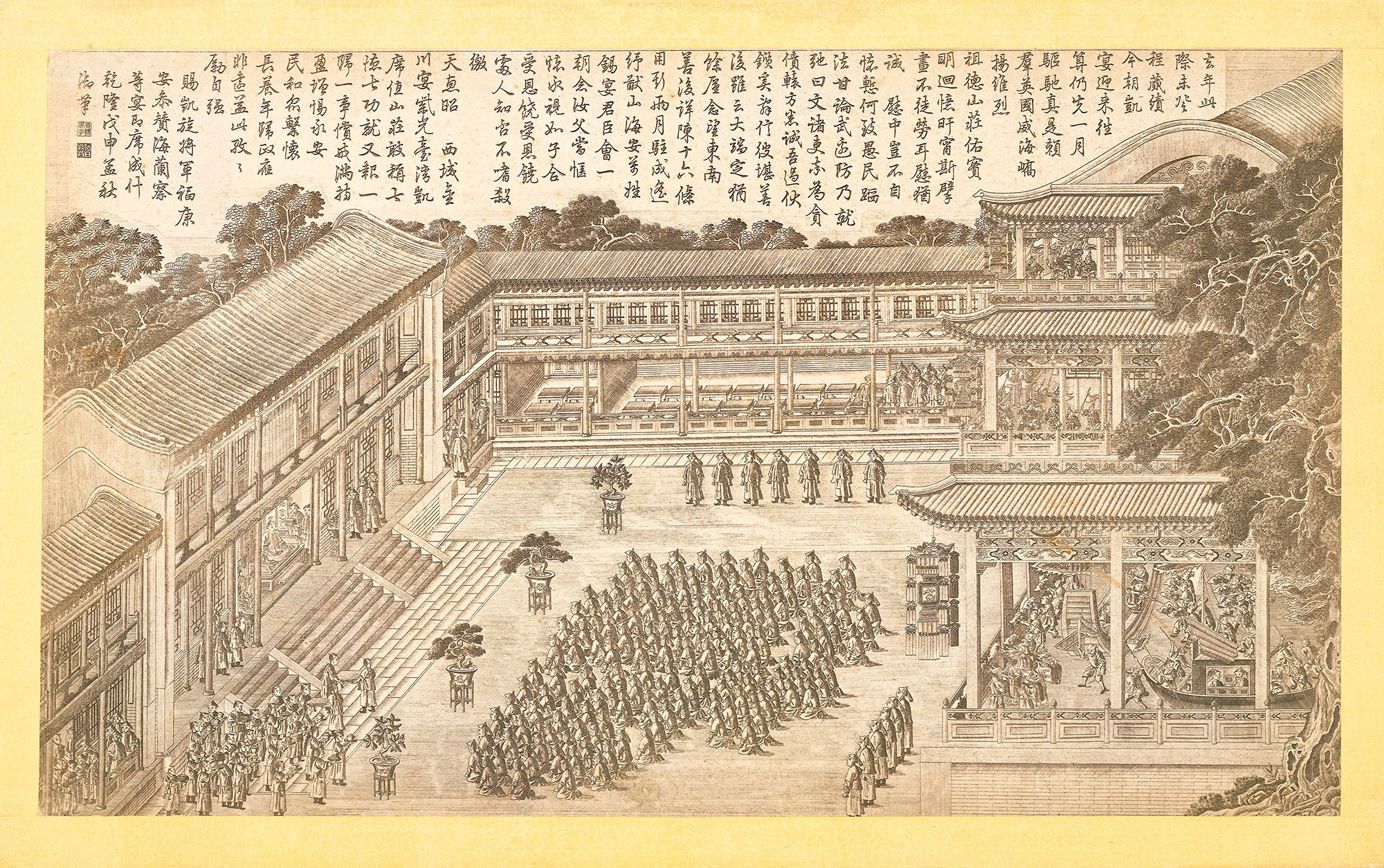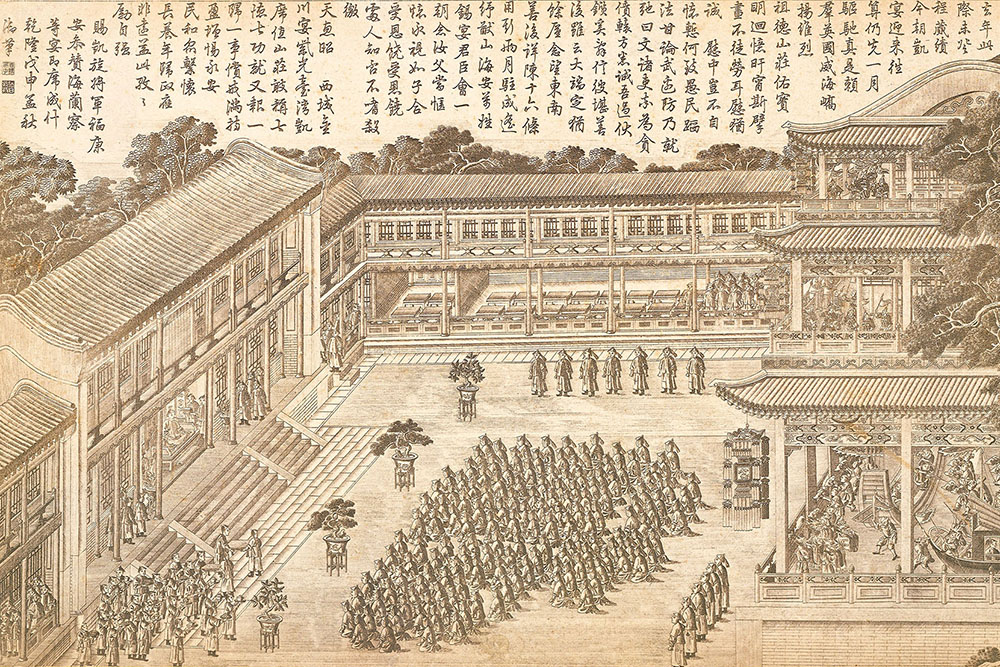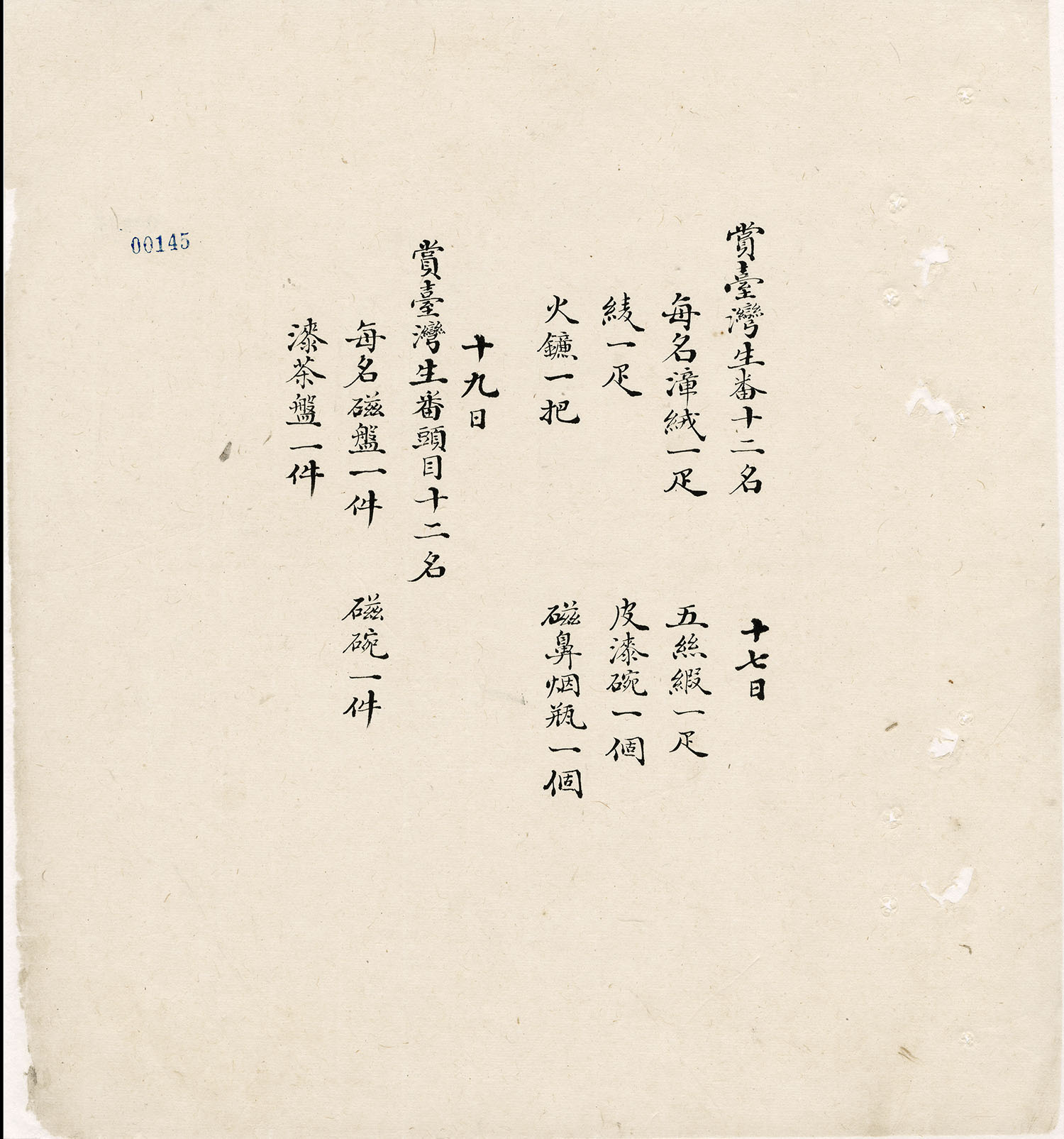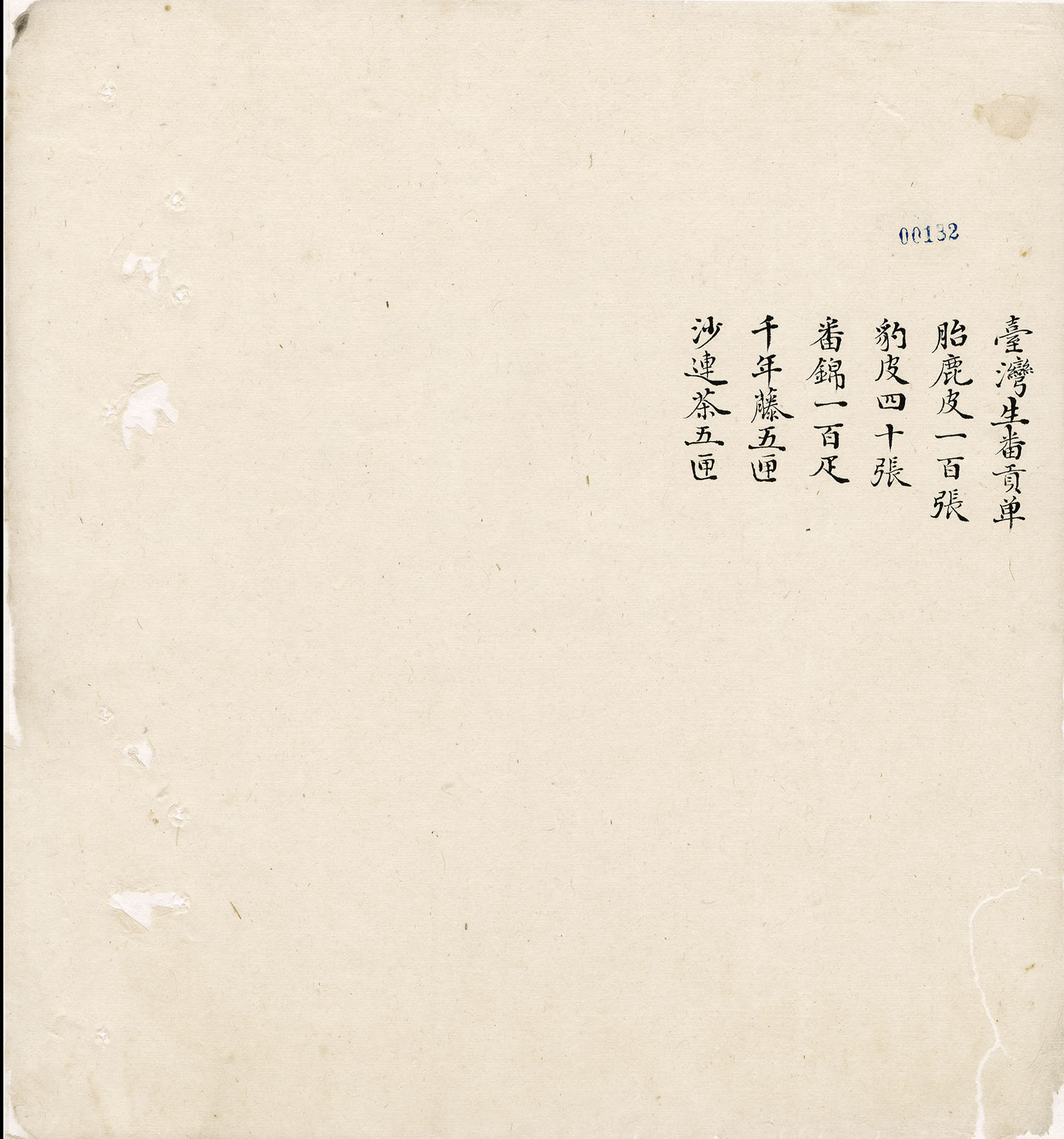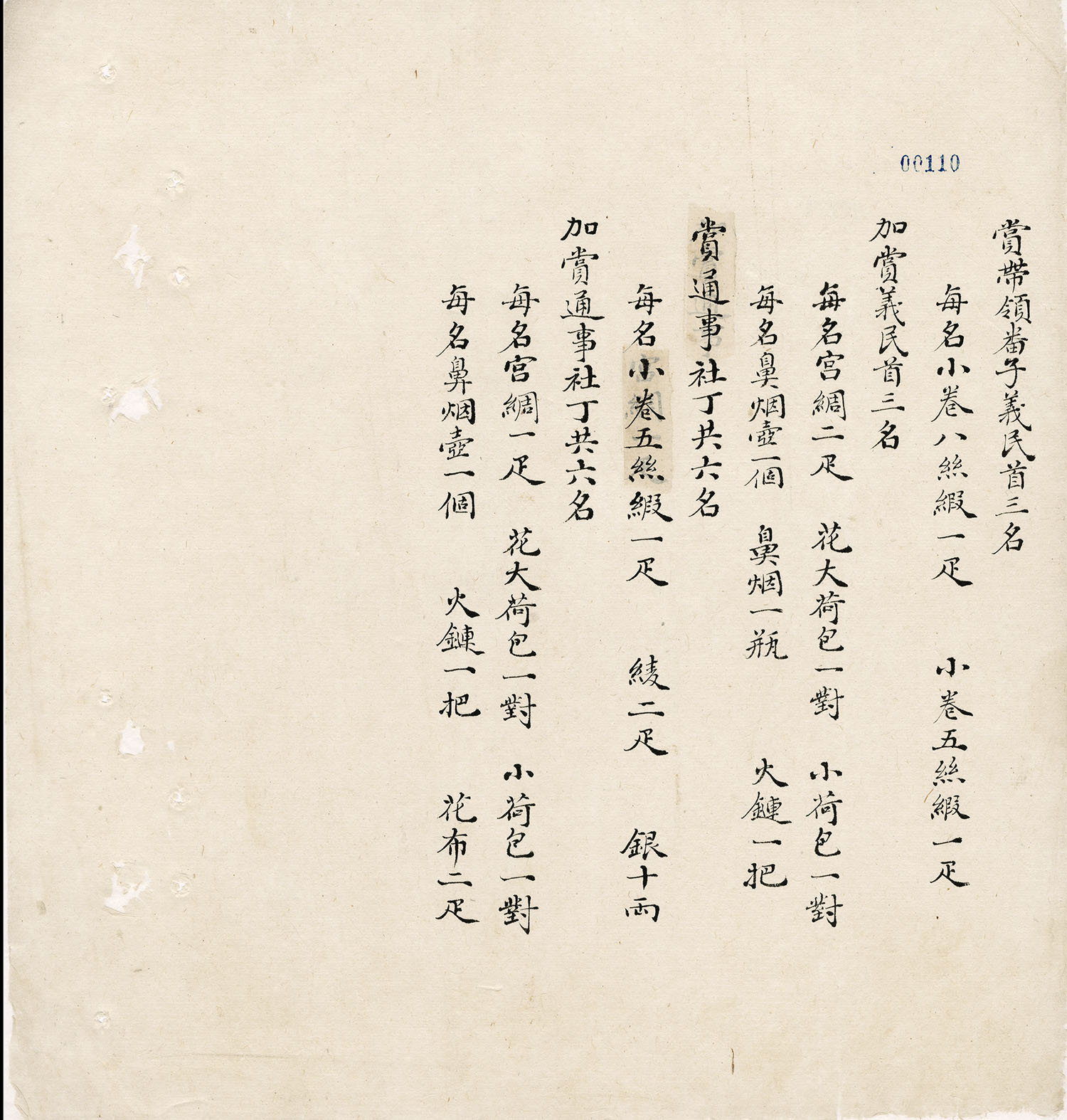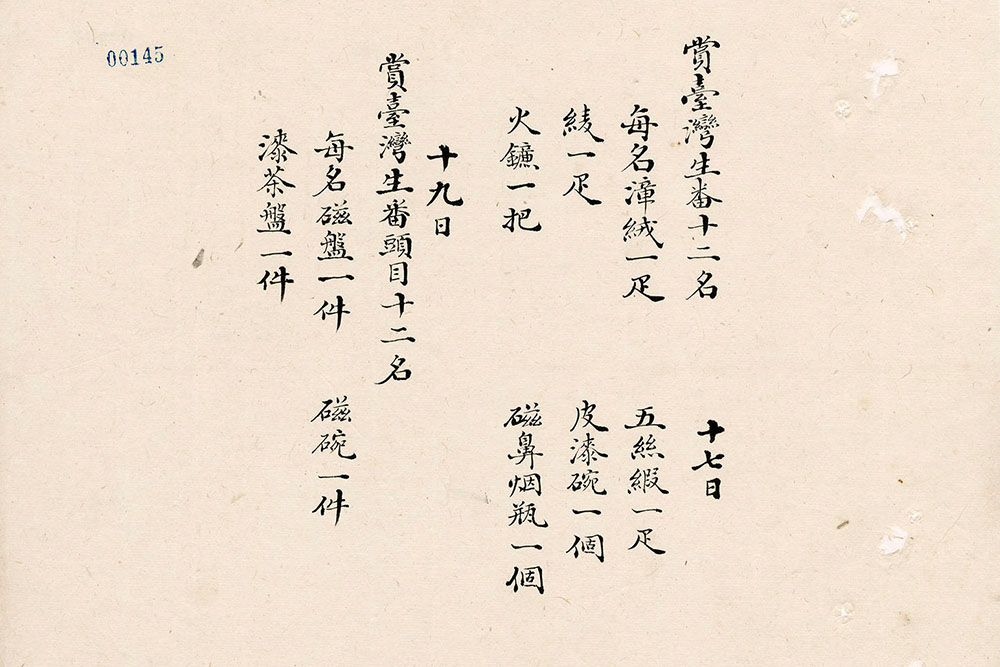Politics and Ritual
In the 42nd year of the Kangxi reign (1703), the Emperor embarked on an inspection tour of the north and celebrated his 50th birthday at the Kharhot Hetun Palace. In the same year, construction began on the Chengde Summer Resort. When the main structure was complete eight years later, the Resort became the Qing emperor's summer residence and a seat of political and military power. Various important events during the Qianlong reign took place here. In 1755, the Emperor invited the high nobility of four Mongol clans to a grand banquet to celebrate the quelling of Dawachi of the Dzungar Khanate. In 1771, Qianlong received Torghut Khan Ubashi, who led his clan on an eastern migration. In 1780, the Emperor received the Sixth Panchen as he traveled from Xigazê in Tibet to celebrate the Emperor's 70th birthday. In 1793, Qianlong received the first envoy from Britain, Lord Macartney. The Eight Outer Temples (Waibamiao) on the outskirts of the Chengde Summer Resort were built one after another while the Qing court sought to pacify the Empire's northern and western frontiers. The temple construction was intended to woo the Mongols and Tibetans and solidify the alliance between the Manchus and Mongols.
Military Dominance of the Qing Empire and the Summer Resort
Ubashi Khan (1743-1775), the leader of the Torghut Tribe of Uuld Mongolia, led his tribe of 170,000 people eastward to return to his homeland in Dzungar Khanate. Although it was not his intention to surrender and pay allegiance to the Qing dynasty, the heavily armed Qing army gave him no other options. In September 1771, Emperor Qianlong met Ubashi Khan at the Summer Resort. To commemorate the event, the emperor erected two monuments in front of the Putuo Zongcheng Temple next to the Summer Result (Taiwan Indigenous peoples).
Poem Composed When Visiting the Putuo Zongcheng Temple
- 38th year of the Qianlong region (1773), Qing Dynasty
- From fascicle 80 of Qinding Jehol Zhi (Imperially Endorsed Local Gazetteer of Jehol)
- Compiled by He Shen, et al., on imperial order
- Imprint by the Imperial Printing Office at Wuyingdian Hall, 46th year of the Qianlong reign (1781), Qing dynasty
Torghut is one of the four Mongolian tribes of the Four Oirats. When the Dzungar Khanate rose in power in Mongolia, Torghut relocated westward to the lower reaches of Volga, Russia. However, Russia's constant bullying over the years was intolerable, so Torghut tried to free itself from Russian rule. Thus, by the mid-Qianlong period, Torghut tribal leader Ubashi Khan (1742-1775) led his troop eastward, eventually taking refuge in the Qing court. In 1771, Emperor Qianlong held a banquet at the Summer Resort to receive Ubashi Khan. Because the Putuo Zongcheng Temple had also just been completed, the emperor made a special arrangement that had Ubashi Khan and other Mongolian princes and nobles worship Buddha together. The pacification of Torghut revealed the military dominance of the Qing Empire in its western frontier, which later triggered geopolitical changes in Inner Asia. In 1773, the emperor wrote the poem "Poem Composed When Visiting the Putuo Zongcheng Temple," shedding light on the aforementioned event once again.
Gilt tableware presented by the Torghut Ubashi Khan to Emperor Qianlong, with brocade wrapper, leather case, and wooden box
- 39th year of the Qianlong reign(1771), Qing dynasty
In 1771, the Qing court had the pacified Torghut Tribe live in the Yili region. When Asha (1707-1776), a third-class bodyguard demoted because of his crimes, was released from prison and sent back to Beijing, Ubashi Khan saw him off. Ubashi Khan asked Asha deliver a set of tableware (packed in a leather case) such as Western knives, forks, and spoons to Emperor Qianlong on behalf of him. The emperor ultimately received the kitchen utensils in Jehol in May.
Because the tableware set is similar to the Russian Rococo tableware used in the 18th century, it is surmised to be a tableware used by the Torghut Tribe in Russia. The leather case is engraved with Mongolian alphabets, which translate to "From Ubashi Khan, your Torghut Tribe servant" in Chinese. The pacification of the Mongolian Torghut Tribe was a major event in the history of the Qing court's military expansion.
Palace memorial on escorting Ruan Guangxian from Annam (Vietnam) to Jehol to have an audience with the Emperor
- Presented by Liu E (1723-1795), Governor-General of Zhili
- 8th day of the 5th month of the 54th year of the Qianlong reign (June 1, 1789), Qing dynasty
In the late Qianlong period, the Lê regime in Annam, which had a long-standing relationship with the Qing court, suffered from years of internal turmoil due to the rising of the Nguyễn clan of Tây Sơn. To support the Lê regime, in 1788, the Qing government sent troops to Annam to suppress the Nguyễn clan. In 1789, the Nguyễn army stormed back, causing the Qing troops stationed in Annam to retreat in panic and leaving behind countless food as well as grain and grass-related equipment. Later, the Lê regime came to an end.
In the newly founded Nguyễn dynasty, Nguyễn Huệ (1753-1792) tried to stabilize his newly established rule while preventing the Qing army from striking back again. Thus, in 1789, he sent his nephew Nguyễn Quang Hiển (Ruan Guangxian) as a representative to the Qing court to pay tribute to the emperor and to petition for him to grant Nguyễn Huệ the title as the king of Annam. This gave the emperor an out to stop sending troops to Annam. The emperor accepted Nguyễn Quang Hiển's visit to Jehol to pay tribute to him, and ordered local officials to escort Nguyễn carefully during the trip. This palace memorial shows Liu E (1723-1795) from Zhili informing the emperor that he had instructed Zhili local officials to escort Nguyễn carefully once he arrived there.
Imperial edict bestowing rewards to the King of Annam and his envoys
- From Shangyu Dang (Archives of Collected Imperial Edicts)
- 7th month of the 54th year of the Qianlong reign (August to September, 1789), Qing dynasty
This imperial edict indicates that the delegation team, led by Nguyễn Quang Hiển (Ruan Guangxian), has successfully arrived at the Summer Resort. In addition to meeting with Emperor Qianlong, they received generous gifts and were sent to the Qingyin Pavilion to watch a play.
Illustration of Ruan Guangxian's audience with the Emperor and the succeeding banquet
- From Pingding Annan Tu (Illustration of the Pacification of Vietnam)
- Cooperplate engraving
- Qianlong reign (1736-1795), Qing dynasty
The "Illustration of Ruan Guangxian's audience with the Emperor and the succeeding banquet," drawn by a court painter, depicts the Annam envoy Nguyễn Quang Hiển (Ruan Guangxian) and his delegation team saluting Emperor Qianlong before watching the play in Qingyin Pavilion.
Illustration of Emperor Hosting Banquet for the Triumphant Generals
- From Pingding Taiwan Tu (Illustration of the Pacification of Taiwan)
- Copperplate engraving
- Qianlong reign (1736-1795), Qing dynasty
The pacification of the Lin Shuangwen Rebellion is among one of Emperor Qianlong's Ten Great Campaigns. The rebellion, which started near the end of 1786, was the largest local civil uprising in Taiwan during the Qing empire. The rebellion was pacified in early 1788, and the emperor ordered to have the entire pacification process drawn. 12 paintings were drawn by the end of 1789, and a copperplate battle map was created. The "Illustration of Emperor Hosting Banquet for the Triumphant Generals," drawn by court painter Miao Bingtai (1744-1807) from Jiangsu, is the last of the battle maps. The map depicts the scene where the emperor held a banquet in the East Palace of the Summer Resort in 1788 to entertain soldiers who pacified Taiwan. In the painting, one can see the story related to the pacification of Taiwan being performed on stage inside the Qingyin Pavilion. The decorations inside the pavilion were carefully drawn.
Copy of a palace memorial on Taiwanese aborigines' sincere request to visit Beijing to offer birthday congratulations to the Emperor
- Presented by Kui Lin (1740-1792), Taiwan Division Commander, and Wan Zhongjie, Minister of Justice
- 28th day of the 1st month of the 55th year of the Qianlong reign (March 13, 1790), Qing dynasty
To celebrate the emperor's 80th birthday, in 1790, Taiwan commander Kuilin (?-1792) and Fujian inspector and Taiwan commander Wan Zhongjie (1739-?) planned to send 12 chiefs of Taiwanese indigenous peoples who contributed to the pacification of the Lin Shuangwen Rebellion (and who had never been to the capital city of China) to go celebrate the emperor's birthday. These chiefs came from the four indigenous tribes in the north, four indigenous tribes in the center, and four indigenous tribes in the south. The emperor was thrilled to read in the palace memorial about such a request and granted it. This marked the first time that Taiwanese indigenous people participated in the celebration of a Qing emperor's birthday, and the first and only time that they visited Jehol and the Summer Resort.
Imperially produced inscription on the stele of Confucius Temple of Jehol, announcing the successful pacification of Taiwan
- From the 1st Volume of Qinding Pingding Taiwan Jilüe (Imperially Endorsed Military History of the Campaign in Taiwan)
- Court manuscript in red-lined columns, Qianlong reign (1736-1795), Qing dynasty
During the Qing dynasty, whenever a major war was won, a prisoner offering ceremony was held in accordance with the established customs. Some of the ceremonies were not found in previous dynasties and were the inventions of the Qing empire. Monuments were erected to record the country's military exploits, and the empire's martial arts were carried out in accordance with the Confucian concept of governing the country and unifying the world. The union of the empire's martial arts and Confucian etiquette is illustrated through the aforementioned ceremonies. The "Imperially Produced Inscription on the Stele of Confucius Temple of Jehol, Announcing the Successful Pacification of Taiwan," which was created after the pacification of the Lin Shuangwen and Zhuang Datian uprising, is an example validating the above.
According to Emperor Qianlong, the stele was erected in the Jehol Confucian Temple in the Chengde Prefecture because the planning of the pacification, the deploying of troops and generals, and the eventual pacification occurred during a time when the emperor stayed at the resort. Given that said Confucian Temple was where the emperor visited and paid his respect prior to arriving at the resort, and that the pacification was accomplished because of the blessing of Confucius, the stele was erected at said temple. Such a decision demonstrated how the Qing empire connected Taiwan to the resort.
Imperial edict bestowing rewards to the Taiwanese Indigenous Peoples
- From Shangyu Dang (Archives of Collected Imperial Edicts)
- 7th month of the 55th year of the Qianlong reign (August to September, 1790), Qing dynasty
In 1790, 12 chiefs of Taiwanese indigenous peoples visited Jehol to celebrate Emperor Qianlong's birthday. Such a visit was made possible because of the careful arrangement made by a Fujian official. Official documents of the Qing dynasty recorded the meeting in detail, such as the chiefs presenting 100 deerskin, 40 leopard skin, 100 indigenous textiles, 5 boxes of thousand-year-old vines, and 5 boxes of Taiwanese tea to the emperor as gifts. "Imperial Edict Bestowing Rewards to the Taiwanese Indigenous Peoples" shows the rewards that the chiefs received from the emperor, and how they participated in the imperial banquet and entertainment activities held at the Wanshu Garden of the Summer Resort.

